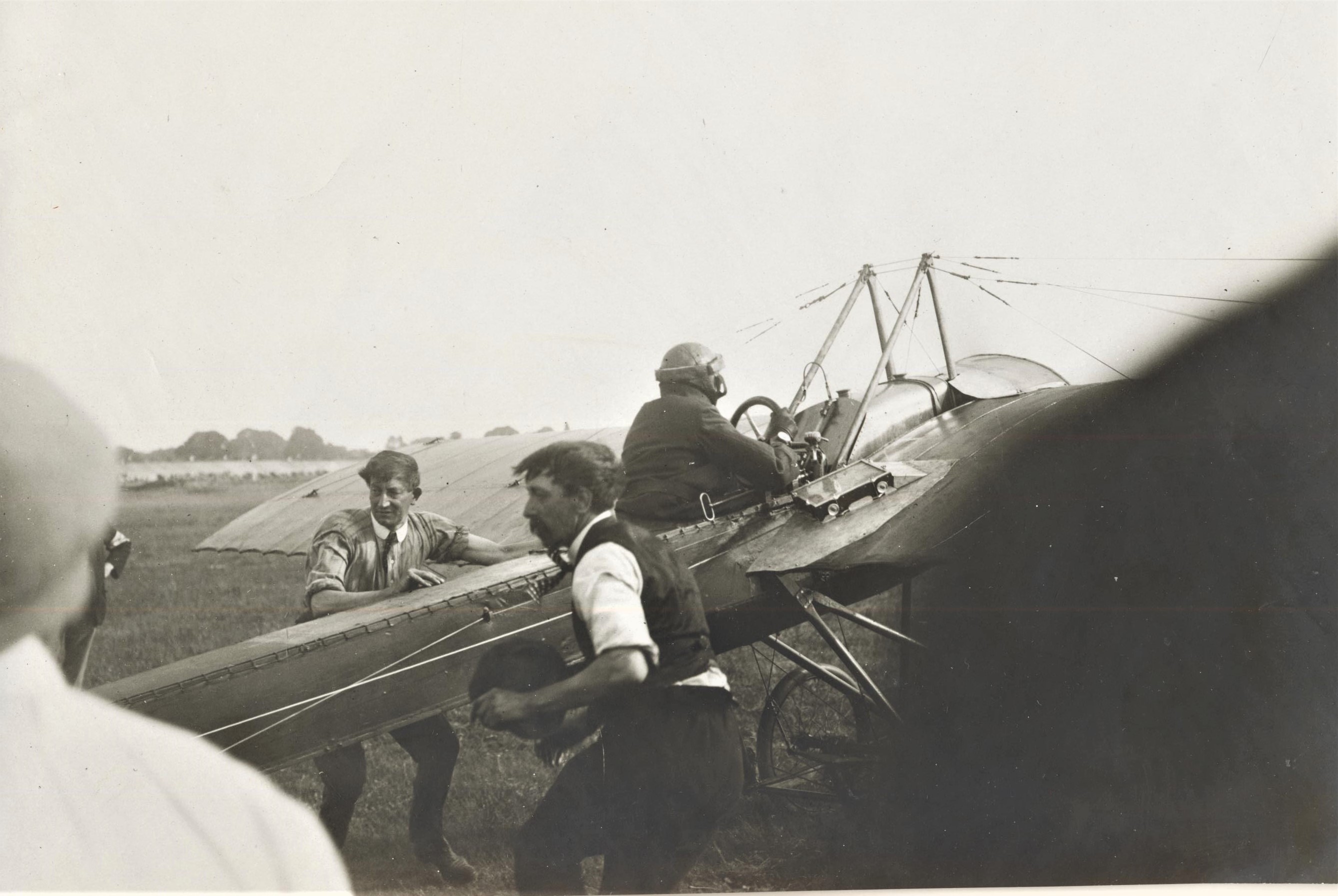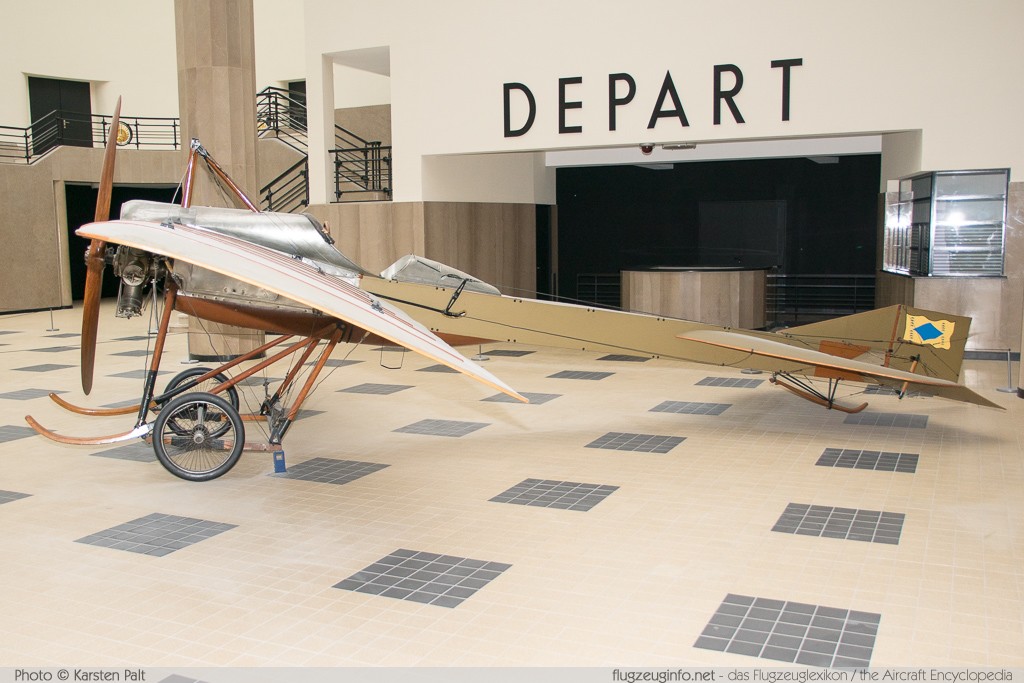 This is a large photograph, with nothing on the reverse, so any help would be welcome.
This is a large photograph, with nothing on the reverse, so any help would be welcome.
2 Answers
The twin-mast configuration is typical of the Deperdussin Monoplane, possibly known as the Deperdussin 1910 Monoplane, or the Deperdussin Type B monoplane, which first flew in 1910.
 Source: Wikipedia
Source: Wikipedia
This example in the Musee de l'Air in Paris has a different fuel tank and cowling configuration.
 Source: Flugzeuginfo.nat
Source: Flugzeuginfo.nat
The exact nomenclature is not clear from what I found. Many sources referred to this as the Type B monoplane, but it seems that although Deperdussin produced a catalogue that included Type A to Type E, they didn't commonly use those names at the time.
The aircraft is recorded as competing in a number of events around Europe and the US, so I can't place the location of the photo, nor date it more than 1910 or later.
There remains one airworthy example at the Shuttleworth Collection in the UK which I remember seeing being flown sometime in the late seventies. It takes a more intrepid pilot than I to climb aboard those early aircraft!
-
2$\begingroup$ "more intrepid" -- surely, not least because control layouts weren't standardized until at least the onset of the Great War. Some of the early airplanes had Zeppelin style controls (one wheel for right-left, another for up-down). Rudder pedals weren't universal, etc. $\endgroup$ Commented Feb 6, 2023 at 13:02
It is a type of Deperdussin monoplane which was first flown in October 1910.
Many were built, and several have survived, including an airworthy example in the Shuttleworth Collection in England.
Most were flown in Europe, but two were used at the Central Flying School at Point Cook, near Melbourne Australia.

